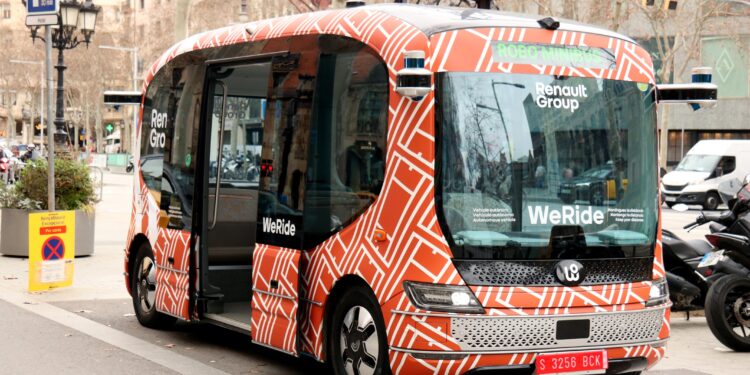The Netherlands has taken a significant step toward the future of public transportation by launching trials of its first self-driving bus on public roads. This pioneering initiative, aimed at testing autonomous vehicle technology in real-world conditions, marks a milestone in the country’s efforts to enhance mobility, reduce emissions, and improve road safety. As the electric, driverless bus navigates urban streets, authorities and technology developers closely monitor its performance, signaling a potential shift in how people commute across Dutch cities.
Netherlands Launches First Self-Driving Bus Trial on Public Roads
The pioneering trial marks a significant milestone in public transportation, as the autonomous bus begins operating on designated routes in the city of Eindhoven. Equipped with state-of-the-art sensors and AI technology, the vehicle is designed to navigate complex urban environments safely and efficiently without human intervention. Local authorities emphasize that safety remains the top priority, with onboard operators closely monitoring the system during this initial phase.
Key features of the self-driving bus include:
- Real-time obstacle detection using LIDAR and radar technology
- Passenger-friendly interface providing live route updates and accessibility options
- Energy-efficient electric drivetrain contributing to the city’s sustainability goals
| Feature | Specification | Benefit |
|---|---|---|
| Sensor Range | 250 meters | Enhanced obstacle detection distance |
| Max Speed | 50 km/h | Safe urban travel speed |
| Passenger Capacity | 20 seats + standing room | Handles typical commuter loads |
Examining the Technology Behind Autonomous Public Transport Innovations
The breakthrough in autonomous public transport owes much to advancements in sensor technology and artificial intelligence (AI). Lidar, radar, and high-definition cameras serve as the vehicle’s eyes, scanning its surroundings up to hundreds of meters in real time. Combined with AI algorithms, the bus can interpret complex urban environments, detect obstacles, predict pedestrian movements, and make instantaneous driving decisions. Connectivity through 5G networks enhances this system further by allowing the vehicle to receive live traffic updates and communicate with city infrastructure for optimized routing.
Underpinning the self-driving bus’s operation is a sophisticated control system structured around layered software architecture. This includes:
- Perception Layer – gathers and processes environmental data.
- Decision Layer – plans routes and maneuvers based on AI predictions.
- Control Layer – translates decisions into steering, acceleration, and braking commands.
The integration of these layers with fail-safe mechanisms ensures safety and reliability, which remain paramount in the ongoing trials. Below is a simplified overview of the core autonomous system components.
| Component | Function | Key Feature |
|---|---|---|
| Lidar Sensors | 3D environmental mapping | High resolution, 360¬į coverage |
| AI Processor | Real-time decision making | Deep learning algorithms |
| 5G Connectivity | Vehicle-to-infrastructure communication | Low latency, high bandwidth |
| Safety Systems | Emergency stop and manual override | Redundant controls |
Recommendations for Policy Makers to Ensure Safety and Public Acceptance
Ensuring the safe integration of self-driving buses into public roadways requires robust regulatory frameworks that keep pace with rapid technological advancements. Policymakers must establish clear safety standards that are adaptable yet stringent enough to build public trust. This includes rigorous testing protocols, continuous monitoring of vehicle performance, and transparent reporting of incidents or malfunctions. Additionally, collaboration with technology developers, transport operators, and municipal authorities is crucial to create an ecosystem that supports innovation without compromising safety.
Gaining public acceptance goes beyond safety assurances; it involves proactive engagement and education campaigns. Authorities should prioritize:
- Community outreach to address concerns and dispel myths about autonomous vehicle technology.
- Inclusive stakeholder dialogues to integrate feedback from diverse user groups, including the elderly and disabled.
- Transparent communication on data privacy and cybersecurity measures to reassure users.
- Pilot programs that demonstrate reliability before full-scale deployment.
| Key Focus | Policy Recommendation |
|---|---|
| Safety Standards | Dynamic regulations adapting to technology changes |
| Public Education | Engagement campaigns and real-time info sharing |
| Stakeholder Involvement | Inclusive dialogue platforms and feedback loops |
| Data & Privacy | Strict data protection policies and transparent cybersecurity practices |














![Leyla Aliyeva visits Azerbaijan National Carpet Museum [PHOTOS] – AzerNews](https://europ.info/wp-content/uploads/2025/12/3035623-leyla-aliyeva-visits-azerbaijan-national-carpet-museum-photos-azernews-120x86.jpg)

